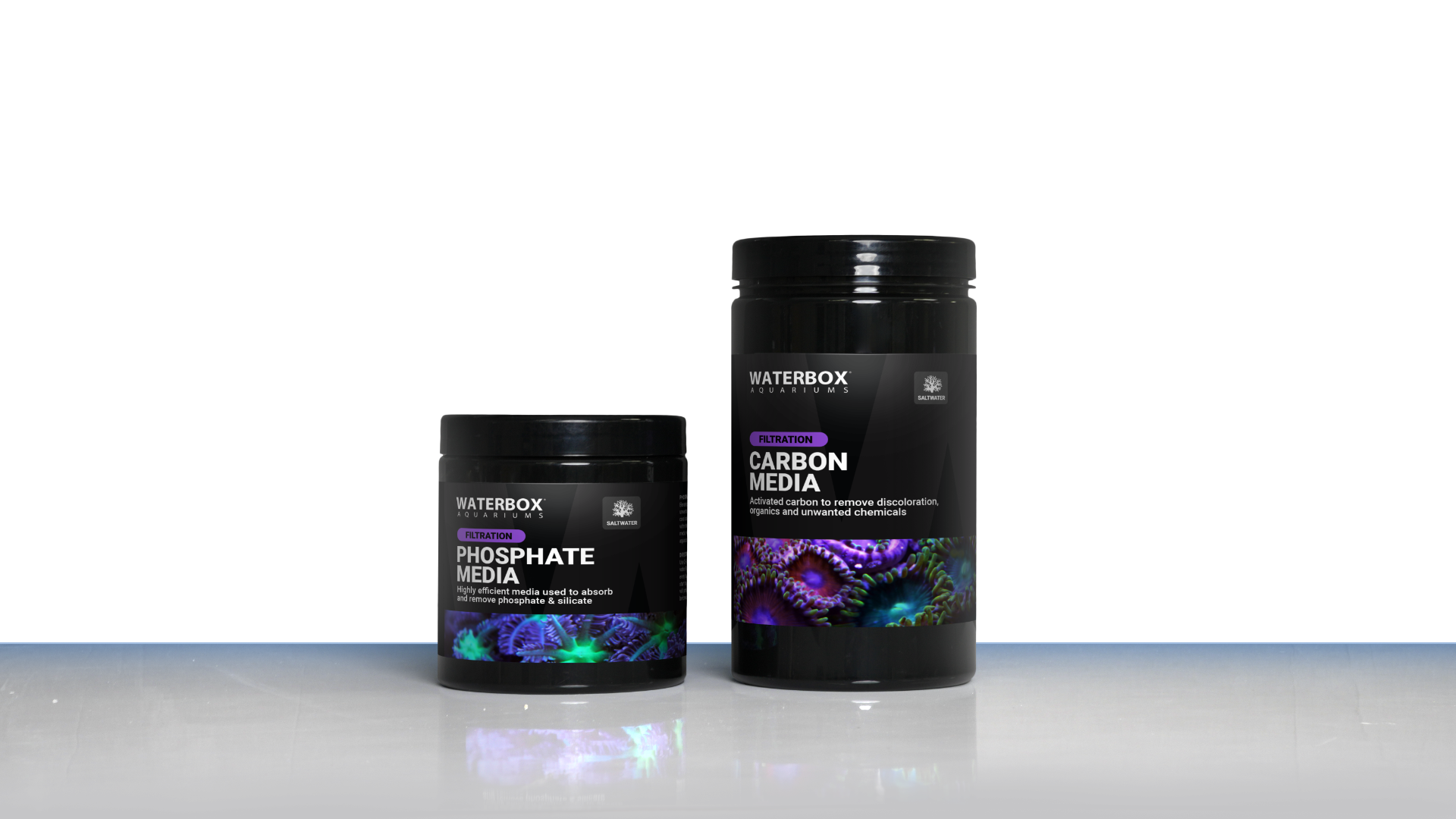Maintaining a thriving aquarium—whether saltwater or freshwater—goes beyond just mechanical and biological filtration. While those systems handle debris and break down waste, chemical filtration is what gives your water that crystal-clear polish and long-term stability. Two of the most effective tools for chemical filtration are carbon media and phosphate media, both of which can make a dramatic difference in the health and beauty of your aquarium.
Why Carbon Media Matters
Activated carbon is one of the most widely used filtration materials in aquatics, and for good reason. It has an incredibly porous surface area, which allows it to absorb and remove a wide range of unwanted substances from the water column.
Waterbox Carbon Media is specifically designed to tackle:
-
Discoloration & Odors – Carbon removes tannins that give water a yellowish tint, along with phenols that create unpleasant smells.
-
Toxins & Organics – It traps dissolved organics from leftover food, waste, or decaying matter that could otherwise cloud the water and stress your fish and corals.
-
Chemical Warfare – In reef aquariums, corals sometimes release toxins to compete for space. Carbon helps neutralize these compounds, keeping your corals healthier.
To maximize its benefits, carbon should be placed in a high-flow area of your filtration system, such as a media reactor or filter sock. Replace it every 4–6 weeks—or sooner if you notice water discoloration or odor returning.
Why Phosphate Media Is Essential
Phosphates are naturally introduced into aquariums through fish food, organic waste, or even your water source. While trace amounts are normal, high phosphate levels can quickly become a problem.
Waterbox Phosphate Media is designed to reduce these excess nutrients, which:
-
Prevents Nuisance Algae – Algae like hair algae, diatoms, and cyanobacteria thrive in phosphate-rich water. Reducing phosphate starves them out.
-
Supports Coral Health – In reef tanks, excess phosphate slows coral calcification, making it harder for corals to build strong skeletons. Keeping levels low promotes better coral growth.
-
Improves Water Quality – Lower phosphate means clearer, more stable water conditions overall.
Phosphate media works best in a high-flow area of your filtration system and should be changed every 4–6 weeks depending on your tank’s nutrient load. Monitor levels with a test kit to ensure stability and avoid removing phosphates too quickly, which can stress sensitive corals.
Using Carbon and Phosphate Media in Freshwater Aquariums
While carbon and phosphate media are often discussed in the context of reef aquariums, they are equally valuable in freshwater systems.
Freshwater Carbon Media helps:
-
Remove discoloration caused by driftwood tannins.
-
Eliminate odors and dissolved organics from waste and uneaten food.
-
Clear out chemical residues, such as after treating the tank with medications (recommended to run for about three days in this case).
Meanwhile, Freshwater Phosphate Media is an important tool for controlling nuisance algae. Elevated phosphates in freshwater aquariums can fuel algae blooms that quickly overwhelm your tank, coating glass, plants, and decorations. By maintaining balanced phosphate levels with phosphate media, you’ll enjoy:
-
A cleaner, clearer aquarium with fewer algae outbreaks.
-
Better stability in fish-only or lightly planted systems.
-
Reduced maintenance and improved viewing experience.
In freshwater aquariums, carbon and phosphate media also give you more control over water quality, making them especially helpful for beginners who may struggle with clarity or algae management.
The Bottom Line
Whether you keep a bustling reef or a tranquil freshwater setup, carbon and phosphate media are key allies in maintaining water clarity, stability, and overall aquarium health. They reduce the invisible stressors in your system, allowing fish, corals, and plants to thrive in a cleaner, healthier environment.
Recommended Products
Make sure your aquarium has the right tools for success. Explore our Waterbox filter media options available in the U.S.:





Share:
The Importance of a Protein Skimmer in Your Aquarium
Top 10 Fish for a Nano Reef Aquarium